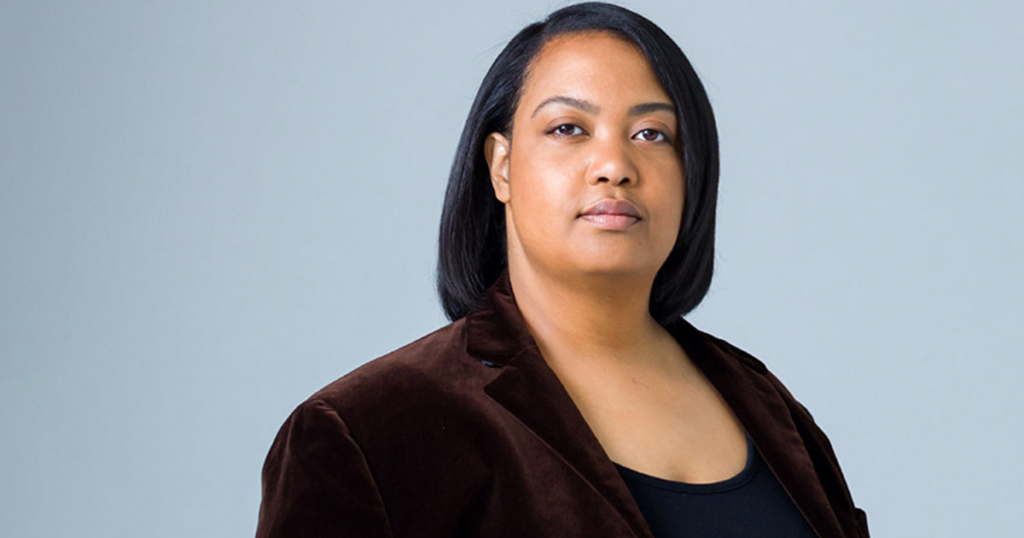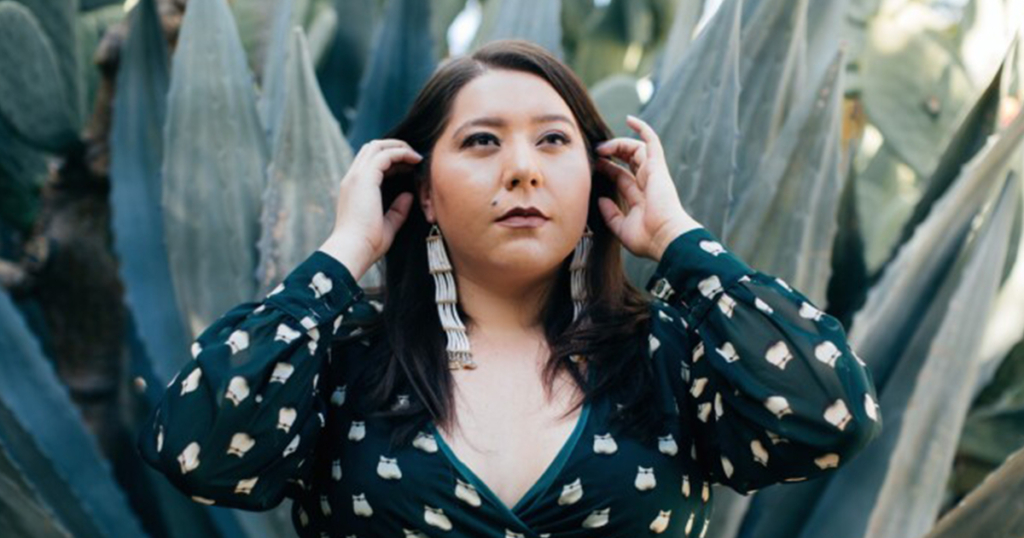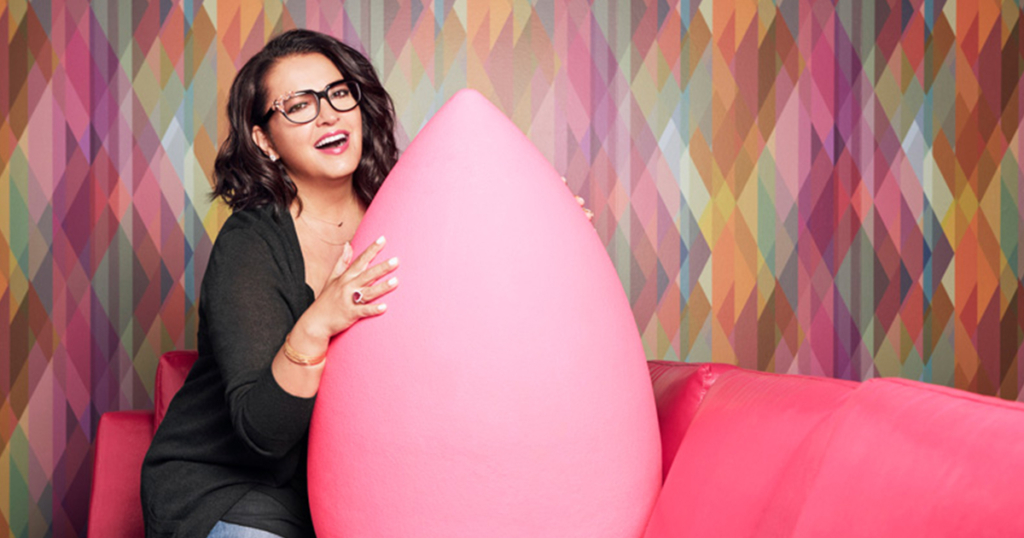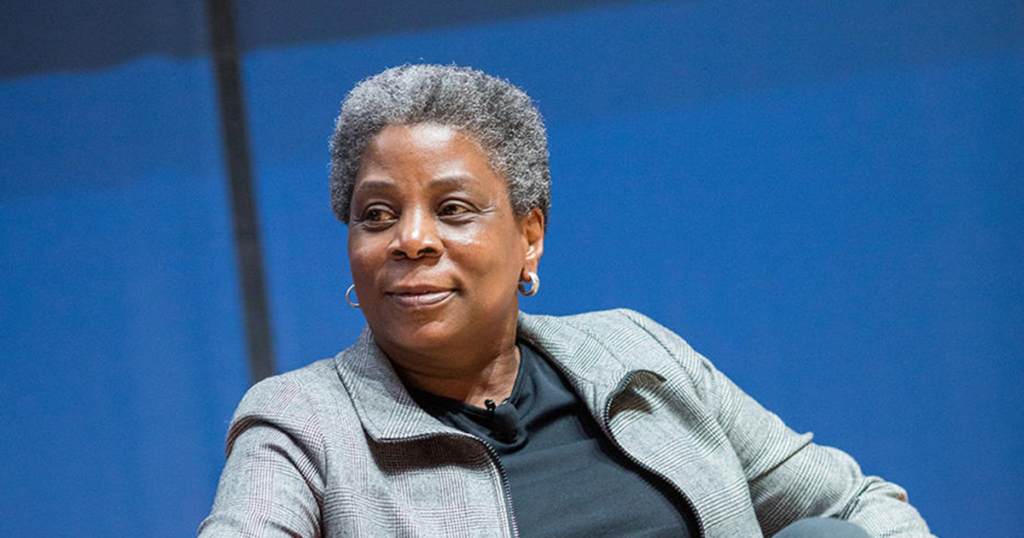
7 inspiring stories of women in business to encourage and uplift you
Earlier this March, we celebrated International Women’s Day – and all month long, we’re celebrating inspiring women in business.
There’s no doubt this past year has been extremely challenging, especially for women. Still, it wasn’t all bad. Women leaders played a crucial role in the fight against COVID-19 and are making strides in business and entrepreneurship. There’s more optimism for business owners this year – and we expect to see more women taking the lead.
It’s our mission at Invoice2go, a Bill.com company, to support small business owners and independent professionals worldwide. Our Female Founders Network community and podcast aim to inspire and empower women through sharing stories and giving actionable business tips.
Let’s look at 6 inspiring women in business for insights and motivation to continue taking steps toward your own goals.

1. Arlan Hamilton – Founder and Managing Partner of Backstage Capital
Arlan Hamilton, founder of venture capital firm Backstage Capital, didn’t even know what a VC was in 2010, according to Time. But while working in the music industry, she became enamored with the startup world and set her sights on starting a tech company in Silicon Valley.
While researching the tech industry, she learned that 90% of all VC and angel funding goes to white men, even if they account for only a third of the US population. “That caught me off guard as a gay Black woman in the South with no connections,” she told Time. “I thought, ‘That doesn’t seem like that’s going to end well, if that stays the same.’” It was then that she turned her focus to raising money for a fund instead of raising money for a company.
“The only difference between the people who have become millionaires and billionaires with their tech companies, who are mostly white men, and the rest of us is in marketing, basically. They were told that they were Superman at 3 years old. We were not.” - Arlan Hamilton (Shondaland)
According to Shondaland, Hamilton was homeless at the time. She attended pitch meetings in the day and slept on the floor of San Francisco International Airport at night. Finally, in 2015, an investor wrote her a check for $25,000, she told Time, allowing her to launch Backstage Capital, a VC firm that supports women, BIPOC, and LGBTQ+ entrepreneurs. Backstage Capital estimates that less than 10% of VC deals go to these underestimated founders.
Today, Backstage Capital has invested roughly $20 million in close to 200 companies, per Time. To make its returns from investments more accessible, Hamilton last year figured out how to allow anyone to legally buy shares in Backstage Capital. Previously, only those who earned at least $200,000 a year or had a net worth above $1 million could invest in VC firms.
Beyond financial support, Backstage Capital also offers mentorship. Backstage Studio, which Hamilton co-founded in 2018, has opened accelerator programs in Philadelphia, Detroit, Los Angeles, and London to train the next generation of underestimated entrepreneurs.

2. Bethany Yellowtail - Founder, CEO, and Designer of B.Yellowtail
Bethany Yellowtail grew up on the Crow Reservation in southeastern Montana, according to The Zoe Report, far from any fashion capital. Yet Yellowtail – a member of the Northern Cheyenne Nation – was immersed in rich colors and patterns from an early age, when she’d bead and sew with loved ones around the kitchen table. Her home economics teacher, impressed with her skill, told her she could succeed in fashion, inspiring her to pursue a career in fashion design.
Yellowtail decided to attend Brooks College in Long Beach, California – only for it to close before she enrolled, per The Zoe Report. Crying, she called her home economics teacher, who explained Yellowtail’s predicament to representatives of the Fashion Institute of Design & Merchandising (FIDM) at a conference she happened to be attending. FIDM accepted Yellowtail.
After she graduated in the midst of a recession in 2009, she gave herself a deadline of a year to find a job, according to The Zoe Report. Shortly before reaching it, she landed a temporary position with BCBG as an assistant patternmaker before the label hired her full-time. Yellowtail dreamed of designing her own clothes, though.
While at FIDM, she noticed collections that appropriated Indigenous culture and identity without compensating Indigenous people, InStyle reported. “When I went home, I saw the drastic inequality on my reservation and something just didn't sit right,” she told the magazine. In 2014, she launched B.Yellowtail, a Los Angeles-based fashion brand that draws from her cultural roots. Her father sold his cattle ranch equipment to help her get a loan.
“I want to be able to employ my own people to sell my garments and help manufacture them so they can make a good living. It only makes sense. And yet, there really isn’t anywhere else in Indian country where something like this is happening.” - Bethany Yellowtail (Southern Poverty Law Center)
Just three years after Yellowtail started her business, she co-designed a scarf for Women’s March participants, the Los Angeles Times reported, and Vogue Editor-in-Chief Anna Wintour invited her to speak on a panel about diversity in the fashion industry. Even during the pandemic, B.Yellowtail created new positions and grew its team, per Martha Stewart Living.
Yellowtail also leverages the success of her brand to empower her community. In 2016, she started the B.Yellowtail Collective, which sells products from other Indigenous artisans. When the pandemic hit in 2020 – and took a disproportionate toll on Indigenous people – she worked with a manufacturer in LA to make cloth masks, according to InStyle. She gave away more than 100,000 to Indigenous communities in the span of a year.
3. Turia Pitt – Burn Survivor, Athlete, Author, Mindset Coach
In 2011, Turia Pitt was a vivacious 24-year-old athlete working as a mining engineer in Western Australia. However, during a 100km ultra-marathon through the Australian Outback, her life changed forever, according to her website. She came upon a grassfire that quickly surrounded and trapped her. Unable to escape, Turia suffered burns over 65% of her body. Doctors didn’t expect her to live.
“And gratitude is a tool that I use every day to short circuit those sort of negative emotions. And the awesome thing about gratitude, you can’t be grateful and angry at the same time. You can’t be grateful and bitter at the same time. If you’re truly grateful, that’s the only experience that you can have.” -Turia Pitt (Fearless Motivation)
Pitt survived. Despite suffering full-thickness burns all over her body, losing seven fingers, and having over 200 medical procedures over two years, she went on to write three best-selling books and created digital coaching courses that have helped thousands around the world. She also continues to participate in some of the world’s most demanding physical challenges.
Less than five years after being severely burned, Pitt completed the Ironman challenge in Hawaii – widely considered the world’s toughest triathlon. Today she’s a bestselling author, speaker, mindset coach, wife, and mother. Through her online course, School of Champions, she’s coached over 40,000 people to reach their full potential.

4. Rea Ann Silva - Founder and CEO of Beautyblender
Despite having invented a cosmetic staple, Rea Ann Silva didn’t plan on a career in makeup, according to MSNBC. At FIDM, she was an aspiring fashion illustrator – until a breakup left her struggling as a single parent, forcing her to work as a makeup artist to make ends meet.
Silva followed the clients she served on music video sets early in her career to film and TV sets, per MSNBC. Over time, she became known for her hand-cut, egg-shaped sponges. Wetting them before applying foundation created a flawless, airbrushed finish. When she noticed actors swiping the sponges from her makeup bench, she realized she might’ve created a game changer.
In 2003, she formed an LLC named Beautyblender and started selling her product in professional makeup stores, Forbes reported. Customers began buying the eye-catching pink sponge and spread the word to other makeup artists. Eventually, small chains began carrying the Beautyblender. Social media generated even more buzz.
“Life can be a very long journey for us. And that is a blessing and a gift. And you know not to feel pressured to make decisions or, you know, define yourself by success in three or four or five years. Take your time. Why do people want to make it so short?” - Rea Ann Silva (Forbes)
But the Beautyblender wouldn’t see a surge in popularity for another decade, a year after Sephora started carrying it, Forbes explained. Six years later, sales hit $175 million, and today, the Beautyblender ranks as one of the most ubiquitous makeup tools, used by A-listers among the likes of Meghan Markle and Kim Kardashian, per MSNBC.
And Silva didn’t stop at the Beautyblender, either. In 2018, she launched Bounce, a line of 40 foundation shades, in an effort to create more options for women of color.
5. Sara Blakely – Inventor of Spanx
You’ve likely heard of – or maybe even worn – Spanx. Known for smoothing lines under clothes, this brand is loved by women around the world. But the company’s founder, Sara Blakely, grew up having aspirations far from leggings, denim, and shapewear.
As a young woman, Blakely dreamed of following in her father’s footsteps as an attorney. However, after failing her LSAT exams twice, according to Forbes, she found herself bouncing from job to job, working at Disney World, and even selling fax machines door to door.
Still, even though Blakely described this time as being full of uncertainty and sadness, it wasn’t wasted. She realized she was exceptionally talented in sales and had the emerging feeling she would be unstoppable if she sold something she created and cared about.
Then, one night while getting ready for a party, Blakeley got frustrated with her outfit, Grow reported. She disliked the look of the toe seam with her open-toed sandals – and cut the feet off her pantyhose. She noticed that the control top created a smooth line under her clothes, and the idea for Spanx was born.
Over the next few years, she worked tirelessly. She traveled constantly, pitching her idea and looking for the best supplier. Finally, Blakelylanded a meeting at the famed luxury department store chain Neiman Marcus. She ended up pitching Spanx from in the bathroom, she told NPR, and landed a deal. Soon, Saks, Bloomingdales, and Bergdorf Goodman all picked up her brand.
"With every obstacle that has happened to me in my life, my brain immediately says, 'Where is the hidden blessing?' In starting a business and growing a business, every day is learning how to manage obstacles." -Sara Blakely (Inc)
Oprah Winfrey named Spanx one of her Favorite Things in 2000, further catapulting the brand into the spotlight. In 2012, Forbes featured Blakely on the cover and declared her the world’s youngest self-made billionaire at 39.
In interviews, Blakely attributes her success to her father and his encouragement to experiment and not fear failure.
6. Jane Lu – Founder of Showpo
Jane Lu started her career as a financial analyst at the prestigious Ernst & Young accounting firm. For some this would be a dream job; however, Lu quickly found herself bored and unhappy. In 2010, she quit and decided to take her life in a completely different direction.
She and a friend then started Showpo – a women’s fashion company – from her parents’ garage while she was more than $60k in debt.
Her love of social media and content marketing catapulted her startup. Within two months, they were making money, she told the Strategy Hour podcast. However, after a few years, Jane’s business partner wanted out. Lu decided to buy out her partner and take her business exclusively online.
Within a month, she doubled her sales, and within five months, her monthly revenue grew from $5k to $140k.
Lu liked not having to answer to anyone. She continued to invest in herself and the business. The risks paid off, and Jane became a millionaire at 27.
“Don't be afraid of failure but prepare yourself for it. Business is a series of mistakes. If you're not making any mistakes, then you're not taking enough risks. It's really all about how much and how quickly you can learn from your mistakes and bounce back from them. Be careful not to over-invest and over-commit so that when you've made mistakes, you still have the resources to pivot, keep going and use those learnings to improve your business and yourself as a businessperson.” – Jane Lu (Remodista)
Although the focus is on fashion, Showpo sells various items, including makeup, homeware, and accessories. The product names are cute, relatable, and memorable. Jane knows and relates to her client avatar.
The brand’s evolution to include a successful, affordable wedding range was no accident: It dropped right around the time of Jane’s wedding.
Lu’s knack for picking what to sell has served her well. Showpo is one of Australia’s fastest-growing online retailers. They hit $100 million in 2020, with no external funding.
Today, Lu continues to work hard, play hard, and support other women in business – all with her son, Lachlan, on her hip.

7. Ursula Burns – Former CEO of Xerox, CEO of VEON
In 2009, Ursula Burns made history by becoming the first female African-American CEO of a Fortune 500 company.
As a child, Burns was a bright student with an affinity for math. She attended a Catholic school before winning a scholarship to the Polytechnic Institute of New York University. After earning a bachelor’s degree in mechanical engineering, Burns earned a master’s from Columbia.
After graduating in 1980, Burns interned at Xerox. Upon becoming an assistant, Ursula realized she had an opportunity to spend time with the company’s leaders. The insight she gained here ultimately led to her getting promoted.
In 1999, she became the Vice President of global manufacturing. Burns’s team created network printers, which virtually every office in the world now uses. In 2009, Burns became CEO of Xerox.
“Find something that you love to do, and find a place that you really like to do it in.”“Dreams do come true, but not without the help of others, a good education, a strong work ethic, and the courage to lean in.” - Ursula Burns (Strategies for Influence)
President Barack Obama appointed Burns as a leader in the White House National STEM program, as well as vice-chair of the President’s Export Council, which she led from 2015 – 2016.
Burns has served on numerous boards, including those of American Express, Diageo, Uber, the National Academy Foundation, MIT, and the US Olympic Committee.
In 2014, Burns was named the 22nd most powerful woman in the world by Forbes. Showing no signs of slowing down, Burns was appointed CEO of VEON in 2018.
Inspiring women in business can change the world
We hope the stories of these inspiring women in business uplift you and encourage you to continue pushing forward. We’re here to support you in your journey. For more valuable tips for improving your business, join Female Founders.
Related Articles

How to accept credit card payments on Invoice2go in 3 simple steps

Accept payments online via Apple Pay and Google Pay

Must-not-miss write-offs as you wrap up 2022 year-end finances

5 ways accepting credit and debit card payments helps your business stay resilient

4 easy ways to increase cash flow today

What is Small Business Saturday and why is it important?
The features and surprising benefits of a well-designed packing slip
